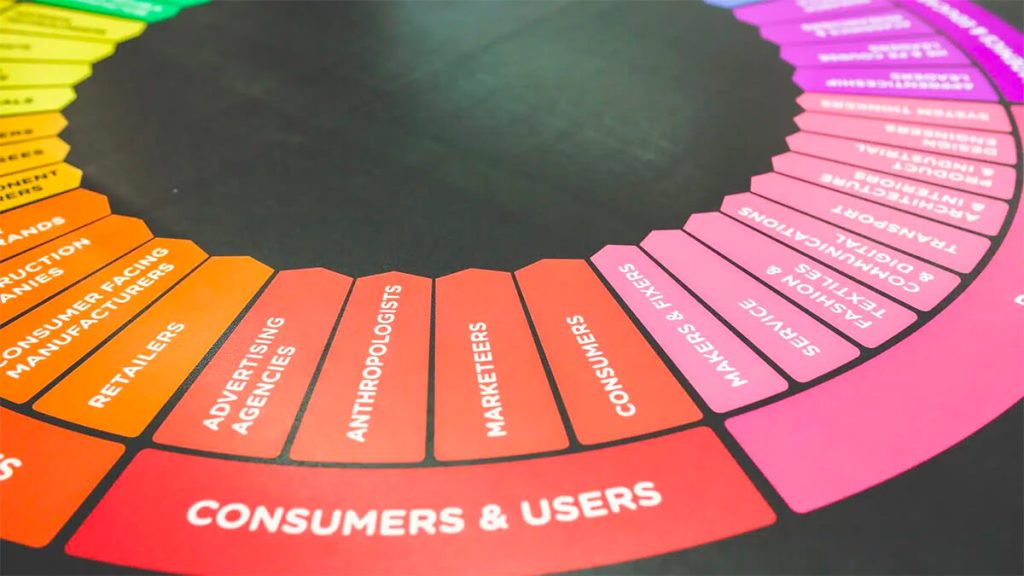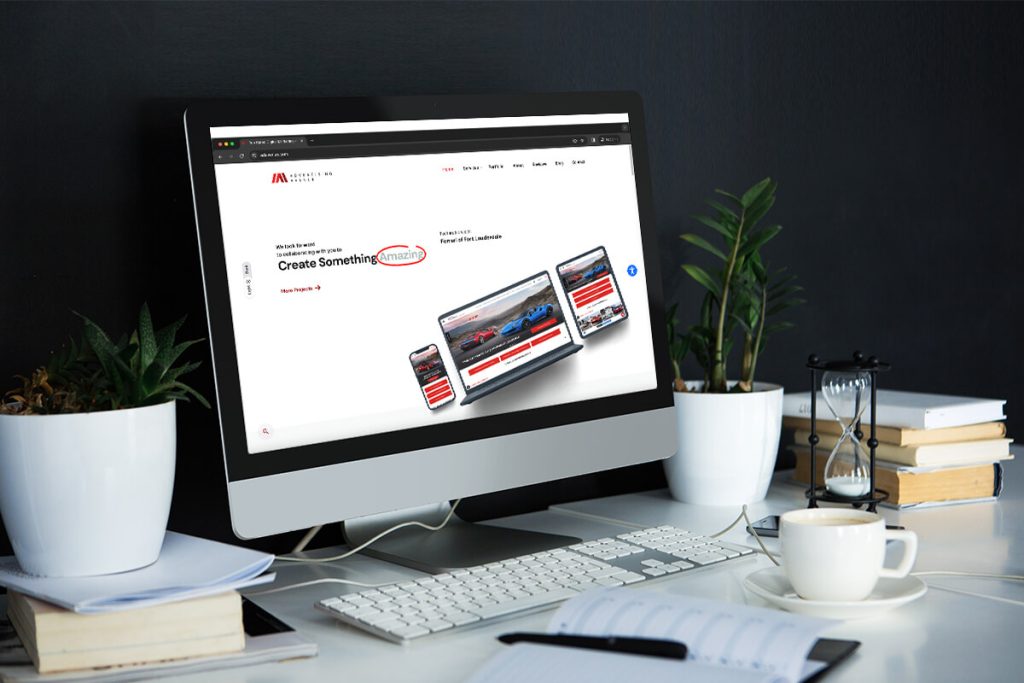
The Psychology of Effective Web Design - Top Tips to Captivate Visitors
Ever found yourself lost in the captivating web of a beautifully designed site, wondering what makes it so irresistibly engaging? Well, my friends, it’s not mere magic; it’s the alchemy of strategic web design. Today, we’re embarking on a journey into the mysterious world where art and psychology intertwine to create online experiences that leave a lasting imprint on visitors.
Unveiling the Secrets Behind Web Design Success
Imagine stepping into a captivating story where every page turn reveals something new and exciting. Similarly, a well-designed website has the power to unfold an immersive narrative for users. As a digital marketer with a passion for web design, I’ve witnessed the transformative impact of understanding the Psychology of Effective Web Design.
Setting the Stage for an Informative Odyssey
In this blog post, we’ll peel back the layers of web design, exploring the subtle nuances that make users click, scroll, and stay. Whether you’re a business owner seeking to enhance your online presence or a curious mind eager to unravel the mysteries behind compelling web design, you’re in for a treat.
Crafting the Perfect First Impression
Picture this: you stroll into a party, and the first person you meet leaves a lasting impression. Similarly, a website’s homepage is your digital handshake. The Psychology of Effective Web Design starts here, creating an immediate connection.
The Power of Visual Elements
Colors, images, and layout speak volumes. Remember when we redesigned a client’s homepage, swapping a dull color palette for vibrant hues? Boom! User engagement soared. Colors evoke emotions, so choose wisely to resonate with your audience.
But the wizardry doesn’t end with colors alone; interactive elements add an extra layer of enchantment. Consider incorporating galleries, sliders, and interactive features to elevate user engagement. Our experience taught us that integrating a visually appealing gallery into a homepage not only captured attention but also encouraged users to explore further.
Showcasing Impactful Landing Pages
Landing pages are like the VIP section of your website. Make them visually appealing and direct. I once revamped a landing page by simplifying its layout and adding a clear call-to-action. Result? Conversion rates skyrocketed.
Understanding Color Psychology
Now, let’s talk about the unsung hero of web design: color. It’s not just about aesthetics; it’s about creating an emotional connection with your audience. The Psychology of Effective Web Design hinges on choosing the right colors.

Picking the Perfect Color Palette
My team once worked with a lawn care brand, and we shifted their palette to calming blues and greens. The result? Visitors felt a sense of tranquility and spent more time exploring. Choose colors that align with your brand and elicit desired emotions.
As you embark on your color exploration, remember strategic web design isn’t about replication but understanding principles. Tailor your palette to align with your brand identity, values, and the emotional response you seek. Just as these brands harnessed color to become unforgettable, your unique color journey awaits, ready to leave a lasting imprint on your visitors.
Case Studies: Brands Nailing Color Psychology
Coca-Cola: Energetic Reds
The iconic red hue of Coca-Cola goes beyond being just a color—it’s an emotion. This energetic and bold red stimulates excitement and urgency, strategically evoking feelings of joy and passion. Synonymous with the brand’s identity, Coca-Cola’s use of red transforms every interaction into a vibrant experience.
Facebook: Calming Blues
Shift gears and consider Facebook’s tranquil blue palette. This calming choice isn’t accidental; it’s a deliberate decision to foster trust and reliability. Facebook, as a social platform, aims to create a secure and connected space. The Psychology of Effective Web Design shines here, as serene blues invite users to engage without overwhelming them, resonating with a vast audience.
Apple: Simplicity in White
A pioneer in minimalist design, Apple embraces the simplicity of white. White exudes cleanliness, purity, and sophistication, allowing Apple to convey a sense of premium quality and innovation. The web design strategy for Apple lies in an uncluttered interface, letting users focus on the essence of their products. White becomes the canvas on which their cutting-edge technology shines.
Starbucks: Earthy Greens
Sip on inspiration from Starbucks and its earthy green tones. Green, associated with nature, growth, and freshness, is strategically used to convey a commitment to sustainability and the quality of coffee beans. The Psychology of Effective Web Design aligns Starbucks with environmentally conscious consumers, establishing a connection through color and dedication to ethical practices.
Designing Intuitively for Your Audience
Now, let’s delve into the intricacies of navigation. Ever visited a website and found yourself lost in a maze? That’s a navigation nightmare. Using the Psychology of Effective Web Design ensures users glide through your site effortlessly.
The Psychology Behind Navigation
Think of your website as a roadmap. Users want a clear path. Labels, menus, and buttons should guide, not confuse. During a project for an e-commerce site, we revamped their menu structure, and sales increased as users found products more easily.
Seamless Navigation Structures
Create a user journey that feels natural. I often compare it to a well-designed store layout—each section logically placed. When users enjoy navigating your site, they’re more likely to stick around and explore.
Reducing Cognitive Load for a Better Experience
Ever felt overwhelmed by information? Web visitors feel the same. The Psychology of Effective Web Design involves simplifying design to ease cognitive load, ensuring users absorb your message effortlessly.
Understanding Cognitive Load
Imagine a cluttered room – it’s hard to focus. Similarly, a cluttered website overwhelms users. Streamline content and visuals, keeping the focus on what matters most. Break information into digestible chunks for easier consumption.
Websites Minimizing Cognitive Load
Leveraging Language for Impactful Communication
Words matter. The Psychology of Effective Web Design extends beyond visuals; it seeps into the language you use. Persuasive copywriting can turn casual visitors into engaged customers.

Crafting Compelling Headlines
The headline is your website’s pickup line. Make it intriguing and impactful. Sharing a personal anecdote in a headline can evoke emotion and draw readers in. Remember, you’re not just selling a product; you’re telling a story.
Copy That Speaks to Your Audience
During a project for a tactical gear brand, we reimagined their verbiage to resonate with users’ aspirations. The result? Increased engagement and a stronger connection. Tailor your language to speak directly to your target audience.
Establishing Credibility with Users
Trust is the foundation of any relationship, including the one between a website and its visitors. Effective web design incorporates trust-building elements to reassure users.
The Psychology Behind Trust Signals
Include trust signals like testimonials, certifications, and security icons. Users feel more confident when they see that others have had positive experiences. During a project for an online store, we added customer testimonials, leading to a boost in sales.
Social Proof in Action
Adapting to the Mobile-First World
In our mobile-centric era, effective web design extends to smartphones. Users behave differently on mobile, and your design should cater to their preferences.
Understanding Mobile User Behavior
Mobile users crave speed and simplicity. Ensure your website is responsive and optimized for various devices. I once revamped a children’s museum website for mobile, improving load times and reservation conversion. Mobile users appreciated the seamless experience.
Showcasing Successful Mobile-Optimized Websites
Explore websites that ace the mobile game. Whether it’s a news site or an e-commerce platform, the principles remain the same. Take inspiration from websites that you know have a great mobile site, and put your unique twist on it. It’s 2024, responsive design isn’t a luxury anymore—it’s a necessity.

Transform Your Digital Presence
Congratulations! You’ve just uncovered the key principles behind utilizing the Psychology of Effective Web Design. It’s not just about aesthetics; it’s about understanding your audience, making connections, and building trust. Now, armed with these insights, it’s time to elevate your web design game.
Remember, your website isn’t just a digital space—it’s an experience. Apply these insights, experiment, and watch as your online presence captivates visitors like never before. Ready to captivate your audience and create a website that truly piques their interest?
At Advertising Avenue, we specialize in weaving the strategic psychology of web design into unique digital experiences. Let’s transform your online presence into a captivating journey that resonates with your audience.





